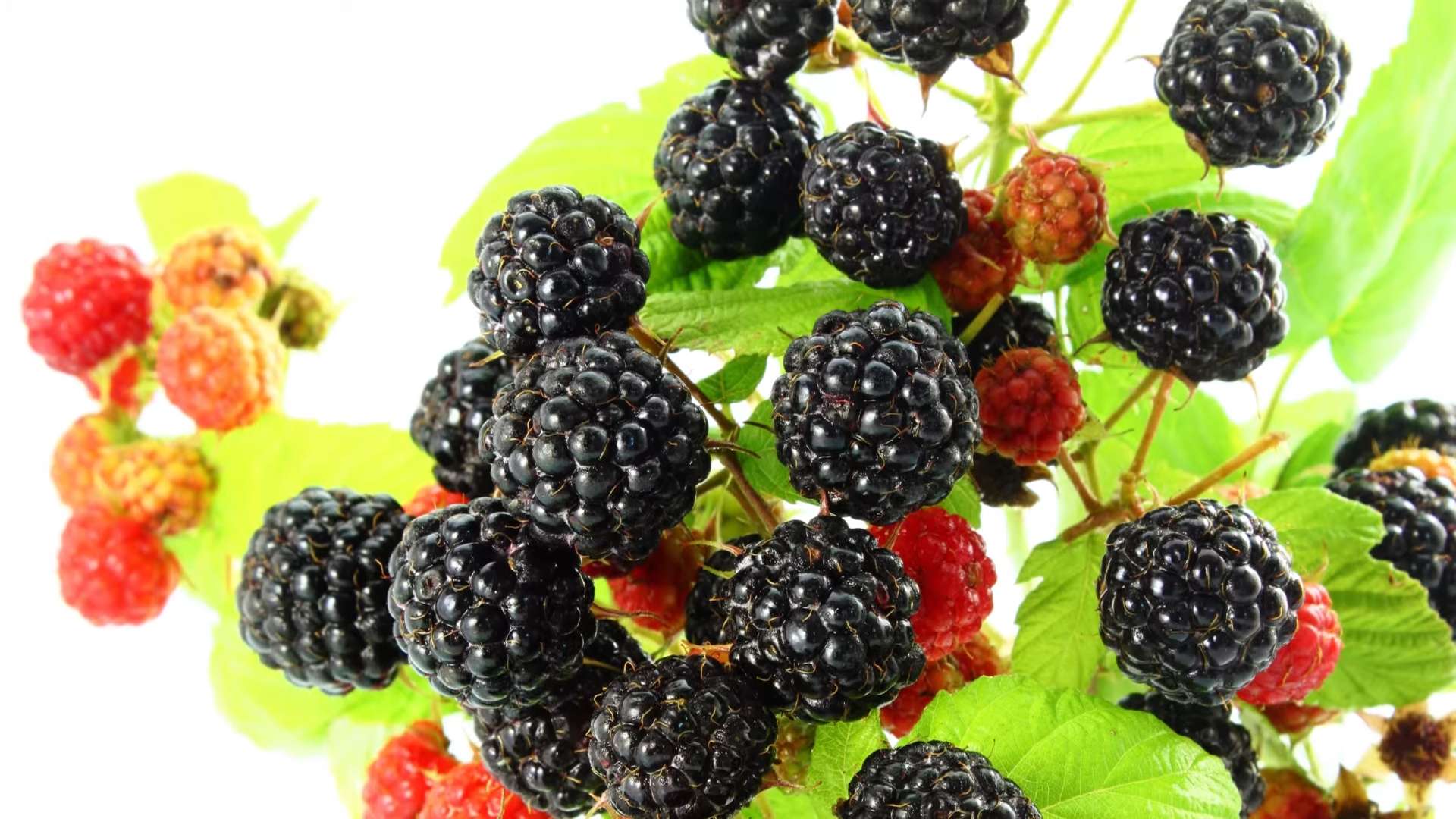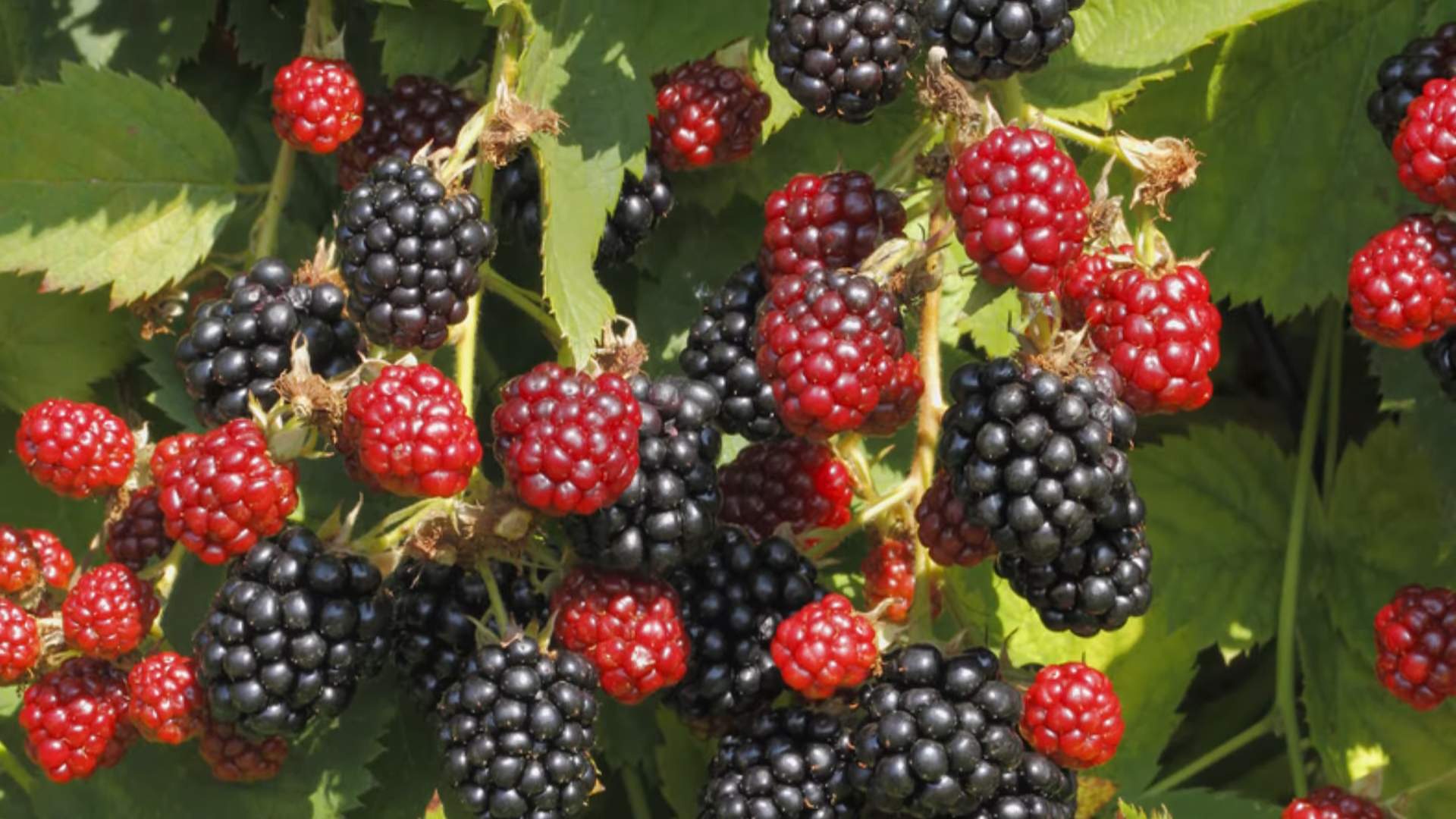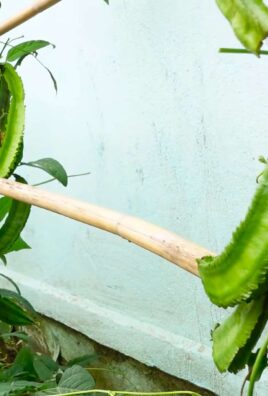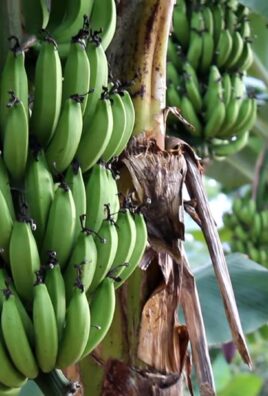Grow Raspberries in Your Garden and unlock a world of sweet, juicy goodness right outside your back door! Imagine stepping into your garden and plucking plump, sun-ripened raspberries straight from the cane – a taste far superior to anything you can find in the grocery store. But let’s be honest, the thought of cultivating these delectable berries can seem a little daunting, right?
Raspberries have a rich history, enjoyed for centuries for their flavor and medicinal properties. From ancient Roman gardens to medieval monastery plots, these berries have always held a special place. Today, the desire to connect with nature and enjoy fresh, healthy food is driving a resurgence in home gardening, and raspberries are a star player!
That’s where this DIY guide comes in! I’m going to share some simple, yet effective tricks and hacks that will empower you to grow raspberries in your garden, even if you’re a complete beginner. We’ll cover everything from choosing the right variety for your climate to preventing common pests and diseases. Why spend a fortune on store-bought berries when you can have an abundance of your own, bursting with flavor and grown with love? Let’s get started and transform your garden into a raspberry paradise!

Growing Raspberries: A Beginner’s Guide to a Bountiful Harvest
Okay, so you want to grow raspberries? Awesome! I’m here to tell you it’s totally doable, even if you’re a gardening newbie. Raspberries are delicious, relatively easy to care for, and nothing beats picking your own fresh berries right from your backyard. This guide will walk you through everything you need to know, from choosing the right variety to harvesting your sweet rewards.
Choosing Your Raspberry Variety
Before you even think about digging a hole, you need to decide what kind of raspberry you want to grow. There are two main types:
* Summer-Bearing Raspberries: These produce one large crop of fruit in the summer, usually around June or July. They fruit on the previous year’s canes (the woody stems).
* Everbearing (or Fall-Bearing) Raspberries: These produce two crops – one in the fall on the current year’s canes, and another smaller crop the following summer on the same canes. Many people choose to prune them to only produce the fall crop for a larger, more manageable harvest.
Here’s a little more detail to help you choose:
* Summer-Bearing Varieties:
* ‘Boyne’: A very hardy variety, great for colder climates. Produces medium-sized, dark red berries.
* ‘Latham’: Another cold-hardy option, known for its disease resistance. Produces medium-sized, bright red berries.
* ‘Nova’: A popular choice with good flavor and disease resistance. Produces large, firm, bright red berries.
* Everbearing (Fall-Bearing) Varieties:
* ‘Heritage’: A very popular and reliable variety. Produces large, firm, bright red berries with excellent flavor.
* ‘Autumn Bliss’: An early-fruiting variety, perfect if you want a fall harvest as soon as possible. Produces large, bright red berries.
* ‘Caroline’: Known for its exceptional flavor and large, attractive berries.
Consider your climate, the amount of space you have, and when you want to harvest your berries when making your decision. I personally love ‘Heritage’ because it’s so reliable and the berries are fantastic!
Preparing Your Raspberry Patch
Raspberries need a sunny spot with well-drained soil. They don’t like soggy feet! Here’s how to get your patch ready:
* Sunlight: Raspberries need at least 6-8 hours of sunlight per day. More is better!
* Soil: The soil should be well-draining and slightly acidic (pH 6.0-6.8). If your soil is heavy clay, amend it with plenty of compost or other organic matter to improve drainage.
* Location: Choose a location where raspberries haven’t been grown before, as this can help prevent soilborne diseases. Also, avoid planting near wild brambles, as they can harbor pests and diseases.
* Support: Raspberries can get quite tall and sprawling, so it’s a good idea to provide some support. A simple trellis system works great.
Planting Your Raspberry Canes
Now for the fun part – planting!
1. Timing: The best time to plant raspberries is in early spring or late fall, when the plants are dormant.
2. Spacing: Space summer-bearing raspberries about 2-3 feet apart in rows that are 8-10 feet apart. Everbearing raspberries can be planted closer together, about 1.5-2 feet apart in rows that are 6-8 feet apart.
3. Digging the Hole: Dig a hole that’s wide enough to accommodate the roots and deep enough so that the top of the root ball is level with the ground.
4. Planting: Gently remove the raspberry plant from its container and loosen the roots. Place the plant in the hole and backfill with soil.
5. Watering: Water thoroughly after planting.
6. Mulching: Apply a layer of mulch around the plants to help retain moisture, suppress weeds, and regulate soil temperature. I like to use wood chips or straw.
Caring for Your Raspberry Plants
Raspberries are relatively low-maintenance, but they do need some attention to thrive.
* Watering: Water regularly, especially during dry periods. Raspberries need about 1-2 inches of water per week.
* Fertilizing: Fertilize in early spring with a balanced fertilizer. Follow the instructions on the fertilizer package. I usually use a 10-10-10 fertilizer.
* Weeding: Keep the area around your raspberry plants free of weeds. Weeds compete with the raspberries for nutrients and water.
* Pruning: Pruning is essential for maintaining healthy raspberry plants and maximizing fruit production. The pruning method depends on whether you have summer-bearing or everbearing raspberries.
Pruning Raspberries: The Key to a Great Harvest
Pruning can seem intimidating, but trust me, it’s not as scary as it looks! Here’s a breakdown of how to prune each type:
Pruning Summer-Bearing Raspberries
Summer-bearing raspberries fruit on the previous year’s canes. This means you need to prune them *after* they’ve fruited.
1. After Harvest: Immediately after the harvest is complete, cut the canes that fruited down to the ground. These canes will not produce fruit again.
2. Thinning: Thin out the remaining canes, leaving only the strongest and healthiest ones. Aim for about 4-6 canes per foot of row.
3. Tipping: In the spring, you can tip the canes by cutting off the top few inches. This encourages lateral branching and more fruit production.
Pruning Everbearing (Fall-Bearing) Raspberries
Everbearing raspberries can be pruned in two different ways, depending on whether you want one or two crops per year.
1. For Two Crops: If you want two crops, prune the canes that fruited in the fall down to the ground in late winter or early spring. The remaining portion of the cane will produce a smaller crop in the summer. After the summer crop, cut those canes down to the ground as well.
2. For One Crop (Fall Crop Only): This is the most common method. In late winter or early spring, cut all the canes down to the ground. This will encourage the plants to produce a single, larger crop in the fall. This method is easier and often results in a more abundant harvest.
Important Pruning Tip: Always use clean, sharp pruning shears to prevent the spread of disease.
Dealing with Pests and Diseases
Raspberries can be susceptible to a few pests and diseases, but with proper care, you can usually keep them under control.
* Japanese Beetles: These pesky beetles can skeletonize the leaves. Hand-picking them off the plants is often the most effective method.
* Raspberry Cane Borer: This insect lays its eggs in the canes, causing them to wilt and die. Prune out any infested canes below the point of damage.
* Anthracnose: This fungal disease causes small, sunken spots on the canes and leaves. Improve air circulation by thinning out the canes and removing any infected leaves.
* Root Rot: This fungal disease can occur in poorly drained soil. Make sure your soil is well-draining and avoid overwatering.
If you’re dealing with a serious pest or disease problem, consult with your local extension office for recommendations on appropriate treatments. I always try to use organic methods whenever possible.
Harvesting Your Raspberries
This is the moment you’ve been waiting for! Raspberries are usually ready to harvest when they are fully colored and easily pull away from the core.
1. Timing: Harvest raspberries in the morning, after the dew has dried.
2. Picking: Gently grasp the berry and pull it away from the core. If it doesn’t come off easily, it’s not quite ripe yet.
3. Storage: Raspberries are delicate and don’t store well. Eat them fresh or refrigerate them immediately. They’ll last for a few days in the refrigerator. You can also freeze them for longer storage.
Enjoying Your Raspberry Harvest
Now that you have a bounty of fresh raspberries, it’s time to enjoy them! Here are a few ideas:
* Eat them fresh, right off the bush!
* Make raspberry jam or jelly.
* Bake them into pies, muffins, or scones.
* Add them to yogurt or cereal.
* Freeze them for smoothies or desserts.
Growing raspberries is a rewarding experience. With a little bit of planning and care, you can enjoy a delicious harvest of fresh berries year after year. Happy gardening!

Conclusion
So, there you have it! Growing raspberries in your garden, while it might seem daunting at first, is entirely achievable and incredibly rewarding. We’ve walked through the essential steps, from selecting the right variety for your climate and soil to providing the necessary support and protection. But why is this DIY project a must-try?
Firstly, the taste of homegrown raspberries is simply unparalleled. Forget the bland, often bruised berries you find at the grocery store. Imagine plump, juicy raspberries bursting with flavor, picked fresh from your own backyard. The difference is night and day. Secondly, you have complete control over the growing process. You can choose to grow organically, avoiding harmful pesticides and herbicides, ensuring that your family is consuming the healthiest possible fruit. Thirdly, growing raspberries is a sustainable practice. You’re reducing your carbon footprint by eliminating the need for transportation and packaging associated with store-bought berries. And finally, it’s a deeply satisfying experience. There’s something truly special about nurturing a plant from a small cane to a thriving bush laden with delicious fruit.
But the fun doesn’t stop there! Consider these variations to personalize your raspberry-growing adventure. For a more compact garden, try growing dwarf raspberry varieties in containers. This is a great option for balconies or patios. Experiment with different trellising methods to find what works best for your space and aesthetic. You could even try growing different colored raspberries – red, black, or golden – for a vibrant and visually appealing harvest. And don’t forget about companion planting! Planting herbs like basil or mint near your raspberries can help deter pests and improve the overall health of your plants.
Growing raspberries is not just about the fruit; it’s about the journey. It’s about connecting with nature, learning new skills, and enjoying the fruits (literally!) of your labor. It’s about creating a sustainable and delicious addition to your garden that you and your family can enjoy for years to come.
We wholeheartedly encourage you to give this DIY trick a try. Don’t be afraid to experiment, learn from your mistakes, and most importantly, have fun! And once you’ve harvested your first batch of homegrown raspberries, we’d love to hear about your experience. Share your photos, tips, and stories in the comments below. Let’s build a community of raspberry enthusiasts and inspire others to embark on this rewarding journey. Happy growing!
Frequently Asked Questions (FAQs)
What is the best time of year to plant raspberries?
The best time to plant raspberries depends on whether you’re planting bare-root or potted plants. Bare-root raspberries are best planted in early spring or late fall when the plants are dormant. This gives them time to establish their roots before the growing season begins. Potted raspberries, on the other hand, can be planted throughout the growing season, as long as you provide them with adequate water and care. However, planting in spring or early summer is still generally preferred.
What kind of soil do raspberries need?
Raspberries thrive in well-drained, slightly acidic soil with a pH between 6.0 and 6.8. They prefer soil that is rich in organic matter. Before planting, amend your soil with compost, well-rotted manure, or other organic materials to improve drainage and fertility. Avoid planting raspberries in heavy clay soil or areas where water tends to pool. If your soil is heavy clay, consider planting in raised beds or containers.
How much sunlight do raspberries need?
Raspberries need at least six to eight hours of direct sunlight per day to produce a good crop of fruit. Choose a planting location that receives full sun for most of the day. If you live in a hot climate, some afternoon shade can be beneficial to prevent the plants from getting scorched.
How often should I water my raspberry plants?
Raspberry plants need consistent moisture, especially during the growing season and when the fruit is developing. Water deeply and regularly, especially during dry spells. Aim to keep the soil consistently moist but not waterlogged. A good rule of thumb is to water when the top inch of soil feels dry to the touch. Mulching around the base of the plants can help retain moisture and suppress weeds.
Do raspberries need to be trellised?
While not strictly necessary, trellising raspberries is highly recommended. Trellising provides support for the canes, prevents them from sprawling, and makes harvesting easier. It also improves air circulation, which can help reduce the risk of fungal diseases. There are several different trellising methods you can use, including single-wire, double-wire, and T-bar trellises. Choose a method that works best for your space and the type of raspberries you are growing.
How do I prune my raspberry plants?
Pruning is essential for maintaining healthy and productive raspberry plants. The pruning method depends on whether you are growing summer-bearing or everbearing raspberries. Summer-bearing raspberries produce fruit on the previous year’s canes. After harvesting, prune out the canes that fruited, cutting them back to the ground. Leave the new canes that grew during the current season, as they will produce fruit next year. Everbearing raspberries produce fruit on the top portion of the current year’s canes in the fall. You can either prune these canes back to the ground in late winter or early spring, treating them like summer-bearing raspberries, or you can prune only the top portion of the canes that fruited, leaving the lower portion to produce a second crop the following summer.
What are some common pests and diseases that affect raspberries?
Raspberries can be susceptible to several pests and diseases, including aphids, spider mites, raspberry cane borers, and fungal diseases like anthracnose and cane blight. Regularly inspect your plants for signs of pests or diseases. If you find any problems, take action promptly to prevent them from spreading. Organic pest control methods, such as insecticidal soap or neem oil, can be effective for controlling aphids and spider mites. Proper pruning and good air circulation can help prevent fungal diseases.
How do I fertilize my raspberry plants?
Raspberry plants benefit from regular fertilization. Apply a balanced fertilizer in early spring, before the plants begin to grow. You can also side-dress with compost or well-rotted manure throughout the growing season. Avoid over-fertilizing, as this can lead to excessive vegetative growth and reduced fruit production.
How long does it take for raspberry plants to produce fruit?
Raspberry plants typically start producing fruit in their second year after planting. However, the yield will increase as the plants mature. By the third or fourth year, you can expect a full harvest.
Can I grow raspberries in containers?
Yes, you can grow raspberries in containers, especially dwarf or compact varieties. Choose a large container with good drainage and fill it with a well-draining potting mix. Water regularly and fertilize as needed. Container-grown raspberries may need to be protected from extreme temperatures in the winter.





Leave a Comment